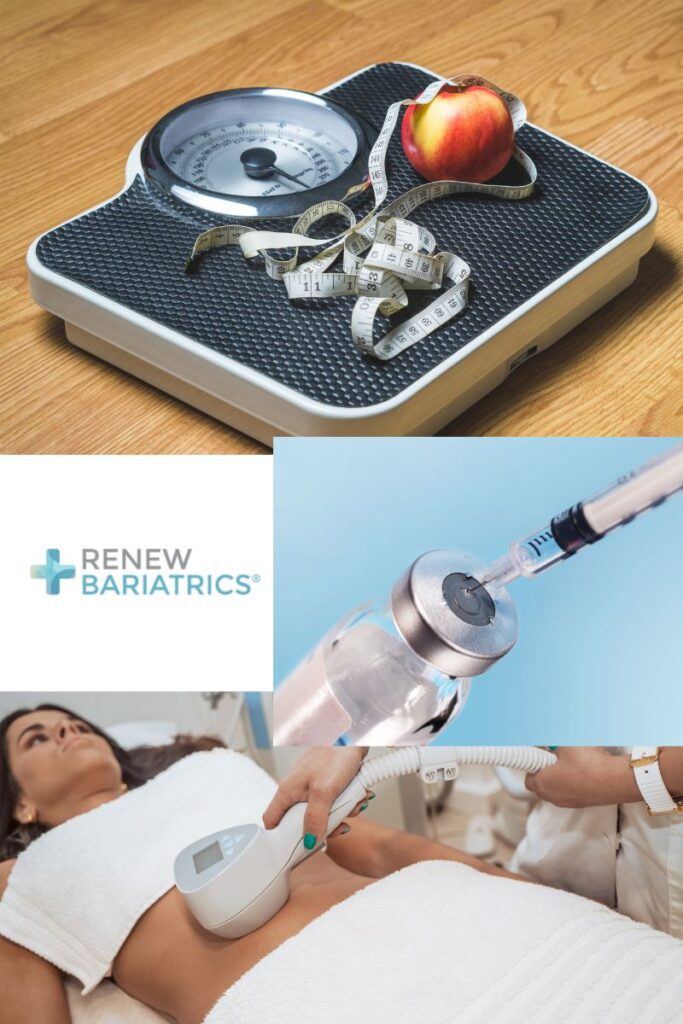
Losing weight has always been a challenge. Traditional methods like dieting, exercising, medication, and surgery can be hard to stick with or come with risks. In recent years, new non-invasive ways to help people lose weight have become more popular. These options are designed to reduce fat or control hunger without surgery or strong medications. Let’s explore the most common non-invasive weight loss tools, how they work, and what to expect.
Fat-Reducing Treatments / Fat Freezing (Cryolipolysis)
Cryolipolysis, also known as CoolSculpting, freezes fat cells in the body. Once frozen, the fat cells break down and are removed by the body over time. It can reduce fat in specific areas by 20-25%. According to a 2023 review in the Journal of Cosmetic Dermatology, it is safe and has high patient satisfaction. Side effects are usually mild, like redness or numbness. However, this treatment works best for small fat areas, not major weight loss. Most people need multiple sessions for noticeable results, and full effects may take a few months to show.
Other Technologies: Laser, Ultrasound, and Radiofrequency
Laser treatments like SculpSure use heat to melt fat cells. These treatments are often used on areas like the stomach, thighs, and flanks.
Ultrasound treatments use sound waves to break apart fat cells without damaging nearby tissue. Devices like UltraShape are designed to reduce fat in a smooth, gradual way.
Radiofrequency devices use energy to heat fat cells and tighten the skin. This can also help with skin firmness, especially after weight loss.
These options are FDA-approved and often used in medical spas. They work best on small problem areas and usually take a few sessions to see results. Many people combine them with healthy eating and exercise for better outcomes.
Intragastric Balloons
Intragastric balloons are placed in the stomach to make a person feel full faster. This helps reduce how much they eat. Some balloons are placed through the mouth with a tube. Others, like the Elipse balloon, are swallowed and filled with fluid once inside the stomach. These balloons stay in place for a few months and then pass naturally.
Studies show people can lose around 13% of their body weight in about four months. The Obesity Surgery journal reported this in a study with over 1,700 patients. Side effects may include nausea or bloating. These balloons work best when combined with a healthy diet and regular check-ins with a health coach or medical team. After the balloon passes, long-term success depends on sticking with new eating habits.
Minimally Invasive Procedures
Endoscopic Sleeve Gastroplasty (ESG)
ESG is a procedure done through the mouth using a scope. It reduces the size of the stomach by placing stitches inside. There are no cuts or scars. The stomach holds less food, so people feel full sooner.
A 2022 study in The Lancet found that people who had ESG lost about 13.6% of their body weight in one year. This option is a middle ground between surgery and non-invasive treatments. It requires sedation but is safer than full surgery. The recovery is quicker, and the risk of complications is lower than traditional weight-loss surgery.
New Technology: Adjustable Balloons and Hormone Targets
Some new balloons can be inflated or deflated from outside the body. This allows doctors to control fullness better and adjust treatment based on patient progress. There are also early tests looking at ways to reduce hunger hormones using tools that go through the mouth. These are still being tested in animals or small human trials, but the goal is to create long-term hunger control without surgery or drugs. Scientists are also looking at how sound waves or vibrations might affect hunger or fat cells.
Tracking Tools and AI Coaching
Weight loss results improve when people have tools to track progress. Some programs include a mobile app to monitor weight, diet, and exercise. These apps can also use artificial intelligence (AI) to give advice and motivation.
Researchers are also studying wearable devices that predict how well someone will respond to a weight loss plan. One study found 84% accuracy in forecasting success using smartwatches. These tools help people stay accountable and adjust their habits over time. Some systems also send reminders, offer meal tips, or connect users with support groups.
Bariatric Surgery as a Proven Option
While non-invasive treatments are helpful, bariatric surgery remains one of the most effective ways to treat severe obesity. It is especially useful for those who have not had success with other methods or who have serious health conditions related to their weight. Bariatric surgery can lead to large and lasting weight loss, and it often improves or resolves conditions like type 2 diabetes, sleep apnea, and high blood pressure.
For patients considering this route, Renew Bariatrics offers safe and affordable bariatric surgery. The team provides procedures like gastric sleeve surgery in trusted locations with high-quality care. Their goal is to make surgical weight loss more accessible while maintaining excellent results and patient support. For many, this can be a life-changing option that works alongside healthy habits and support tools.
Pros and Cons
Pros:
No surgery needed: Most treatments are safe and done in clinics or at home.
Quick recovery: Little to no downtime compared to traditional surgery.
Good for small goals: Best for trimming small fat areas or helping start weight loss.
Tools for support: Apps and coaching help people stay on track.
Can be used with other methods: Some people use these treatments along with medication or therapy.
Cons:
Limited fat loss: Not for people needing major weight loss.
Results vary: Some people lose more than others depending on body type and habits.
Costs: Many of these treatments are not covered by insurance and can be expensive.
Still need healthy habits: Diet and exercise are still important for long-term success.
Not always permanent: Fat can return if old habits come back.
Non-invasive weight loss methods are getting better and more available. People who want to avoid surgery now have options like fat freezing, balloons, and stomach tightening procedures. These tools can help with weight loss, especially when combined with healthy habits. While they may not be a complete solution for everyone, they offer a helpful choice for those looking to start or continue their weight-loss journey. Some treatments are already proven, while others are still being tested. As technology improves, these methods may become even safer and more effective. More research is still needed, but non-invasive options give people more ways to take control of their health and reach their goals.

